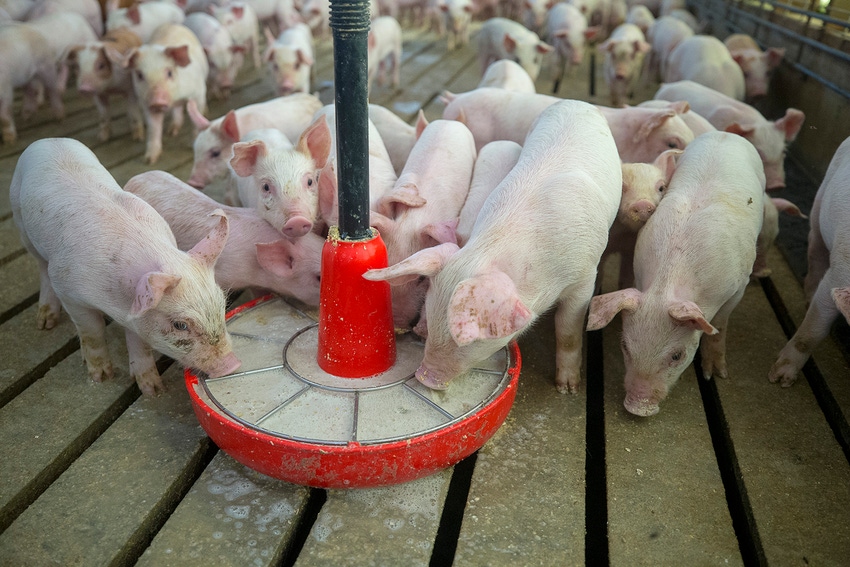Valine biomass for pig diets provides adequate nutrition
Likelihood of seeing spray-dried valine biomass in feed industry will depend on economics.
January 27, 2020

Many animal feeds contain crystalline amino acids, which are often manufactured by genetically engineered bacteria, according to an announcement from the University of Illinois, which noted that these bacteria do not trigger any safety concerns but are capable of producing mass quantities of the protein precursors.
Once the amino acids are synthesized, they are typically filtered out and crystallized for inclusion in diets. However, the industry is recognizing that the remaining deactivated bacterial biomass has intrinsic nutritional value, and some companies are testing the potential to skip the filtration step, the announcement said.
A recent study from the University of Illinois shows that the amino acid valine in dried bacterial biomass is just as nutritious as pure crystallized valine.
Hans H. Stein, professor in the department of animal sciences and the University of Illinois Division of Nutritional Sciences, said, “The biomass contains small quantities of other amino acids, energy from the sugars in the fermentation process, and there’s still quite a bit of valine left that didn’t get taken out via the separation. Some companies are saying, ‘Why don’t we use it all?’” Stein is co-author on a recent study published in the Journal of Animal Science.
Stein explained that the dried biomass contains approximately 64% valine by volume, whereas the crystalline product is nearly pure valine (98%). His research team formulated six experimental diets with equivalent levels of valine from the crystalline product or from the spray-dried bacterial biomass with valine. They fed the diets, which were formulated based on corn, dried distillers grains with solubles, corn gluten meal, lactose and soybean meal, to 224 weanling pigs for 20 days.
The diets were analyzed for nutritional value. The average daily gain, feed intake and gain-to-feed ratio of pigs were calculated. Nitrogen and amino acid concentration in the blood were measured as well. The study showed that pigs gained weight a little faster with valine from biomass, but otherwise the two sources of valine yielded similar results, Stein said.
“We found that biomass-derived valine was at least as bioavailable as the crystalline product, but we wondered why pigs appeared to gain faster if fed the biomass product. We think it’s probably because there are other components in the biomass, such as glutamine and some sugars, that could potentially be beneficial for the pigs,” Stein explained.
He added that the likelihood of seeing spray-dried valine biomass in the feed industry will depend on the economics.
“Producing the valine biomass is less costly than producing crystalline valine because separation and granulation of the final product are avoided. On the other hand, because the valine biomass contains only 64% valine, transport costs will be slightly increased,” he noted. "An additional advantage of utilizing the spray-dried biomass is that it provides a better recovery rate, because the product distributes more homogeneously through the feed.”
If the product does end up being less expensive, Stein expects to see valine supplements from biomass being added to pig diets at later developmental stages.
The article, “Bioavailability of Valine in Spray-Dried L-Valine Biomass Is Not Different from That in Crystalline L-Valine When Fed to Weanling Pigs,” was published in the Journal of Animal Science. Authors include Maryane Oliveira, John Htoo, Caroline González-Vega and Stein. The research was funded by Evonik Nutrition & Care GmbH, Hanau-Wolfgang, Germany.
You May Also Like


